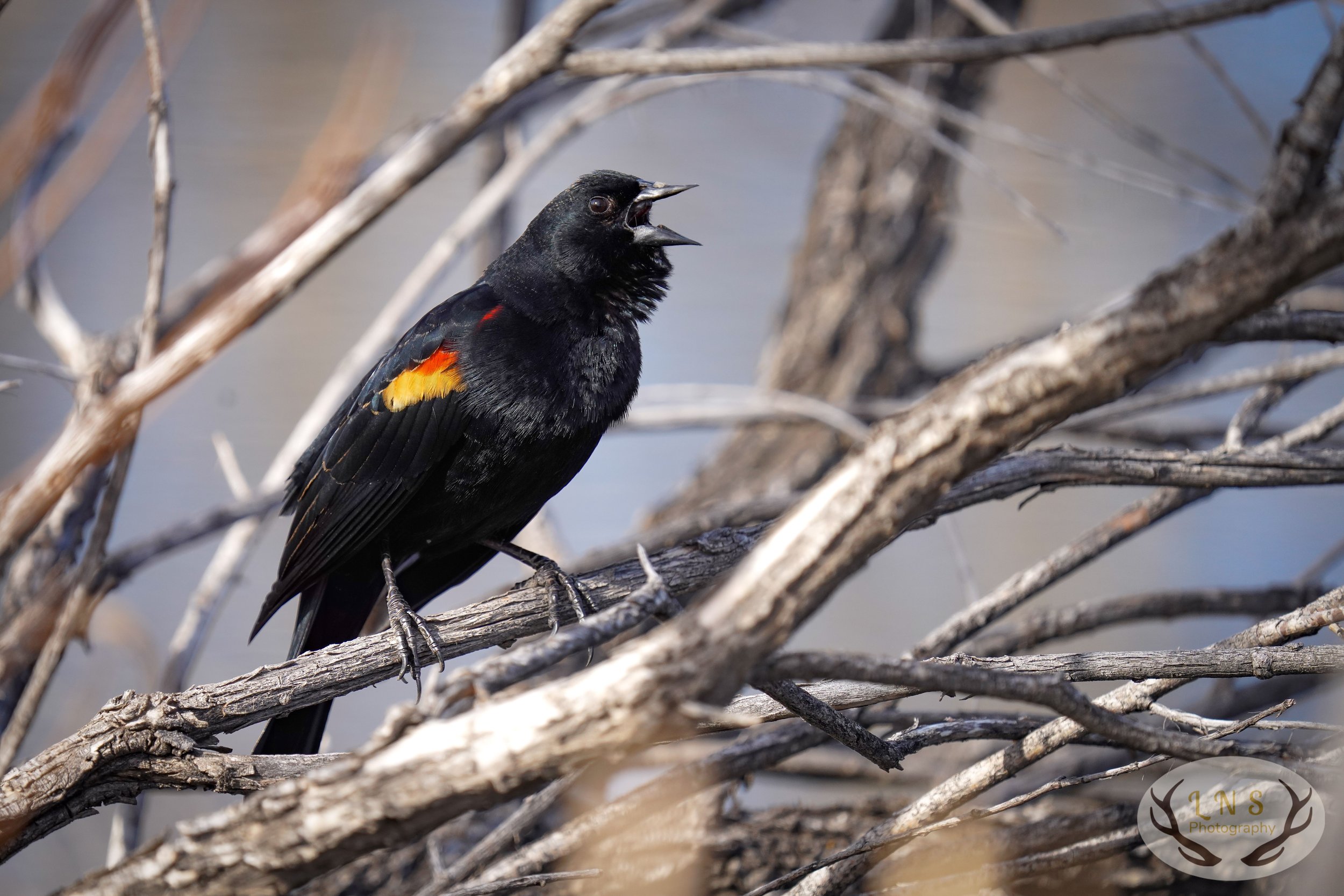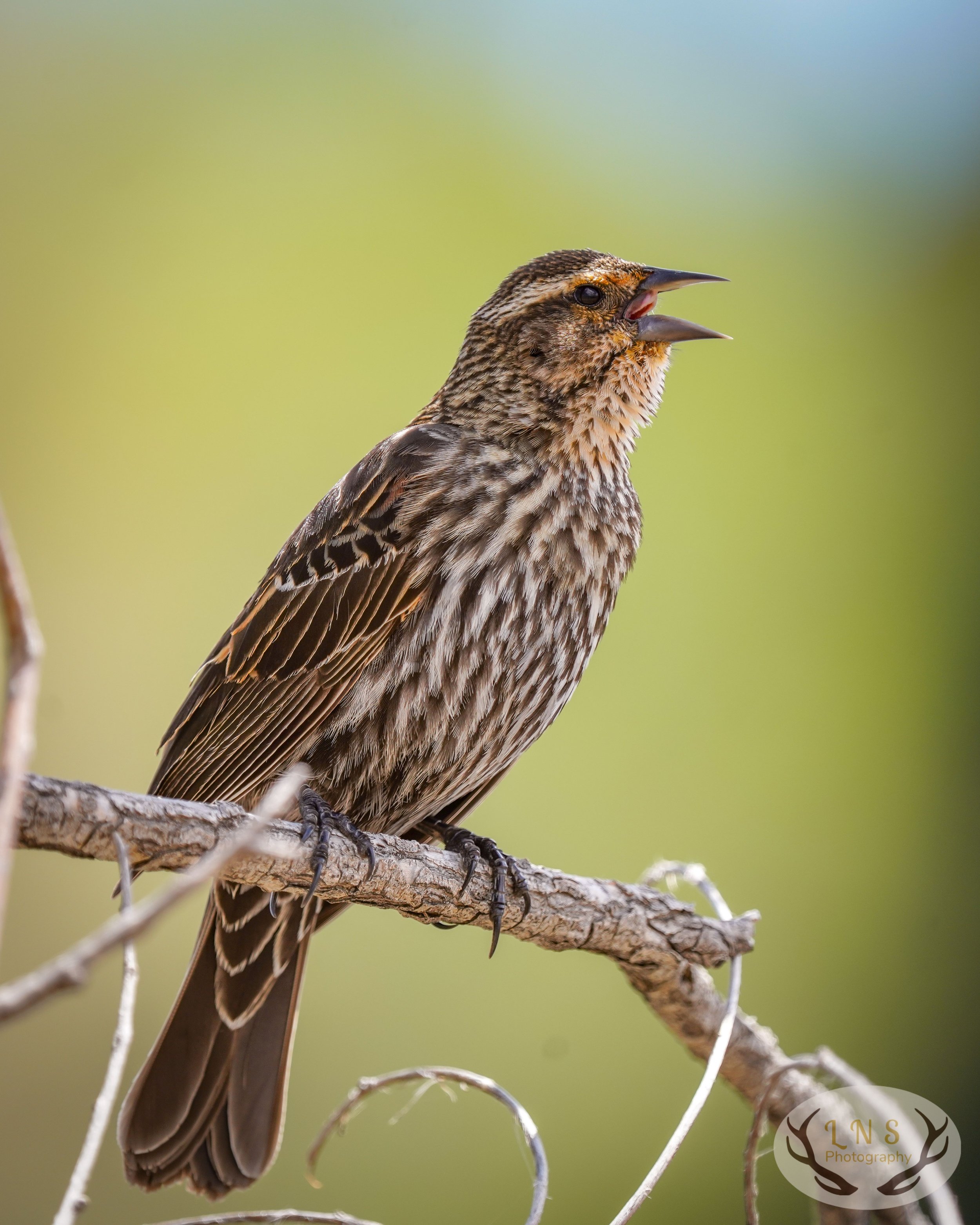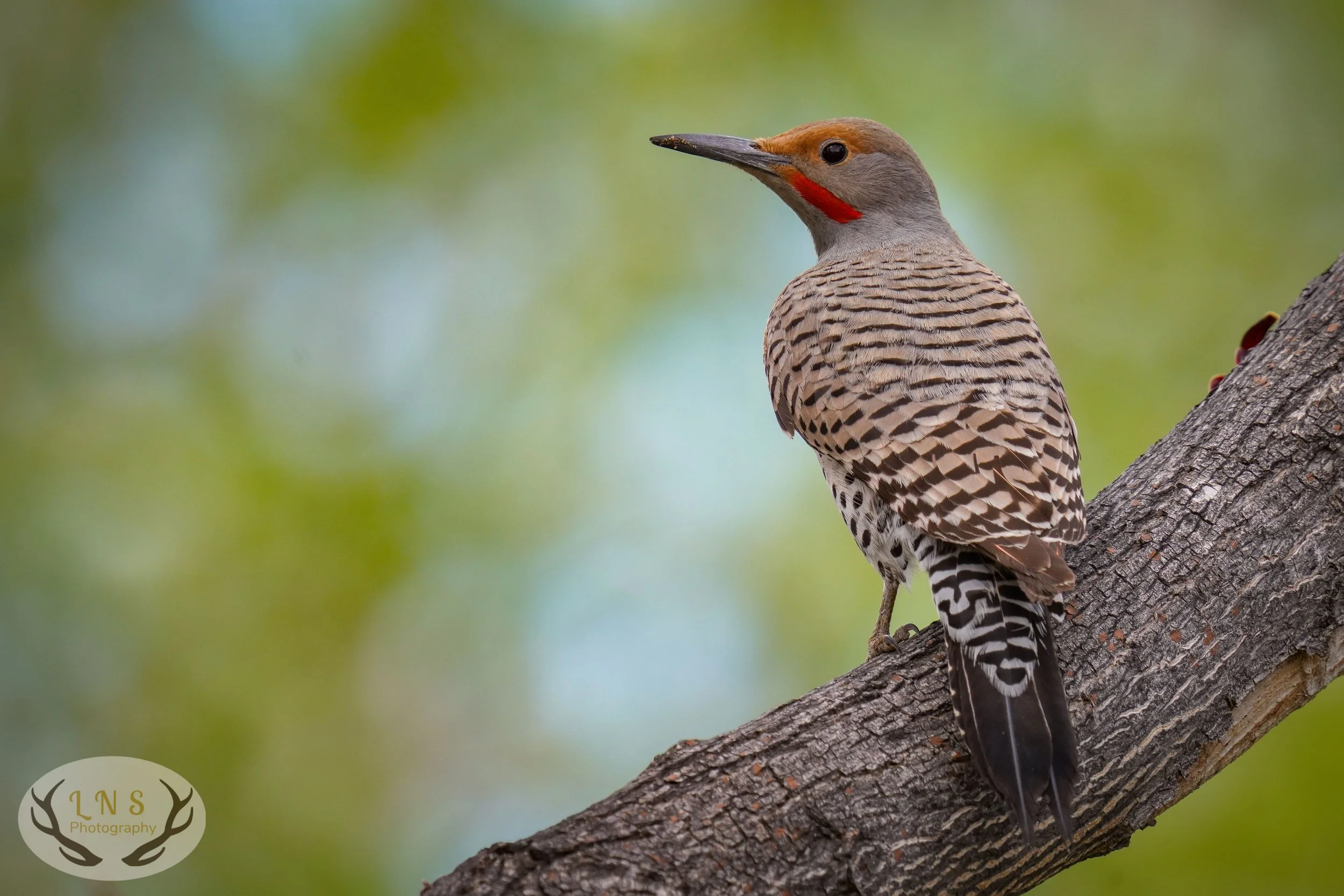Let’s Hear It For The Birds, Part I
March 4, 2024
This past weekend, Don and I attended our 5th bird walk at the Denver Audubon Kingery Nature Center. Led by master birders, these walks focus on exploring the wetlands along the South Platte River near Waterton Canyon. We were fortunate enough to have Erling Kingery lead our group - wife of renowned birder Hugh Kingery (author of Birding Colorado), for whom the nature center is named after. Erling has a rich knowledge of birds and their behaviors and she gave us some fun facts about the common birds we saw on our walk.
One of the first birds were observed on our walk were red-winged blackbirds. I’ve recently seen them in other areas of Colorado, but they had just arrived at the nature center. We learned that these birds have the highest population of all birds across the United States! The reason they have such a booming population is from their promiscuity during the spring breeding season. Red-winged blackbirds often nest in large groups across wetlands, which also means females will mate with many males and will lay eggs in other females’ nests. The birds will raise all the babies in their own nest, leading to high success rates and another boom in their population. Red-winged blackbirds also nest in very dense wetland habitat, hiding nests very well among reeds and cattails, often in bodies of water that are harder for predators to access. These beautiful (and sometimes obnixious) birds are a sure sign of spring when you see them arriving. Another fun fact, these birds can be born leucistic, meaning they have a partial lack of melanin in their feathers. Leucism does not affect the color of the eyes like albinism will. There is actually an all-white red-winged blackbird hanging out at Pella Crossing, where I’ll be hosting my “Wednesday Walk” next week! If you want to join me to look for it, sign up here!
Description and key sounds of the Red-Winged Blackbird
We also saw a number of Northern Flickers. Another common backyard bird, these woodpeckers have a flashy white patch on their back that is very distinctive when they fly. You’ve probably heard them in your neighborhood, but you may not have heard all the sounds they can make! We learned that in addition to their typical kikikiki call and peough call, they also gurgle! The Audubon app I use on my phone doesn’t even have this sound recorded, but we heard it as one flew over us on Sunday!
Description and key sounds of the Northern Flicker
In addition to seeing the red-winged blackbirds and northern flickers, we had several encounters with black-capped chickadees! These lively birds are often zipping about in trees and bushes, with their characteristic “dee-dee-dee” song as they flit about. We learned that the sweet song they sing is intended to attract mates and set up territory while the “dee-dee-dee” song is more a warning to others about predators in the area. The more “dees” and increased intensity of them usually sound a warning about a serious threat. These birds are quite vocal and often have several other types of birds moving along with them - think nuthatches, creepers, kinglets, and other small birds. This is thought to be a protective measure, utilizing the chickadees warning calls for their own alert system.
Description and key sounds of the Black-Capped Chickadee
Other birds we observed on our walk included Canada geese, ring-billed gulls, bald eagles, gadwall ducks, great blue herons, white-breasted nuthatches, common mergansers, European starlings, and mallards. It was a quiet day at the center, but every walk in nature reveals something new, and we sure learned a lot about our lovely backyard birds!
After our outing at the Audubon center, we made our way up to Rocky Mountain National Park to listen to a “Ptarmigan Talk” and learn about their genetic ability to survive in some of our harshest climates. Hosted by both Rocky Mountain National Park and the Rocky Mountain Conservancy, the talk was led by Meg Mahoney from the Natural Resource Ecology Laboratory, Colorado State University. She introduced us to the white-tailed ptarmigan that lives in Colorado’s alpine tundras.
Ptarmigans are the smallest birds in the grouse family. They can also be difficult to differentiate from grouse when in their summer plumage. You’ll want to look for size and feather differences. Ptarmigans specialize in living in alpine climates, where there is little cover, a short growing season, harsh elements, and high concentrations of UV exposure! These cute birds are great at camouflage. From being exceptionally good at staying still to changing their feathers to pure white in the winter, and growing feathers on their feet that act like snowshoes, they have adapted some seriously cool traits for survival. Ptarmigans can be found at varying elevations, but they are always near the very top of their ecosystem. According to the Audubon app, they can be found at 4000’ elevations in Alaska, but are found at over 12000’ elevations in Colorado. It was also found that there are 5 distinctive subspecies of the white-tailed ptarmigan, with some genetic differences found based on where they live. Right now, the primary populations are in Colorado, Oregon/Washington, Montana, Canada/Yukon, and Alaska. There are also some found in small pockets in California, New Mexico, Idaho, and Utah. They primarily eat vegetation, but are opportunistic when food is plentiful. They also tend to stay together in flocks, but females will disperse farther away from their natal flocks than males. Males are highly territorial during breeding season, and they will meet any threats head on! These birds can live a surprisingly long time in the wild, up to a decade or more. The ptarmigan inhabits a relatively small area, so they are a great indicator species and one that is being studied intensely to see how climate change is affecting their adaptability. So far, there are some promising results, showing that females are able to change when they lay eggs to match the weather patterns around them - avoiding laying too early and having heavy spring snow kill chicks, and avoiding laying too late so chicks can take advantage of the plentiful summer food sources. Ptarmigans have been under study since the mid 1960s, using populations both in Rocky Mountain National Park and on top of Mt. Blue Sky (formerly Mt. Evans). The birds on Mt. Blue Sky seem to be thriving and having some increase in their population numbers, but the ones in the park have had some decrease. There is a thought that elk have been directly competing for the same food sources, thus impacting the ptarmigans ability to get enough food to increase the population. Studies like the one Meg Mahoney is conducting, along with studies about human/elk impact, and climate change will be ongoing for the foreseeable future. Let’s hope the ptarmigan has the ability to keep up with the changes for a bright future!
Description and photos of White-Tailed Ptarmigan
Perhaps one of my “Wednesday Walks” will be an adventure into Rocky Mountain National Park to find a ptarmigan!
After this wonderful presentation about ptarmigans, we spent a couple hours inside the park looking for birds. The weather had changed to wind and snow, so there wasn’t a lot of activity, but we did get to see a shrike (still yet to be determined if it was a northern or loggerhead), as well as large flocks of mysterious gray birds that seemed to be hanging out by the hundreds! More about Shrikes and other birds coming in the next installment of “Let’s Hear It For The Birds”!




